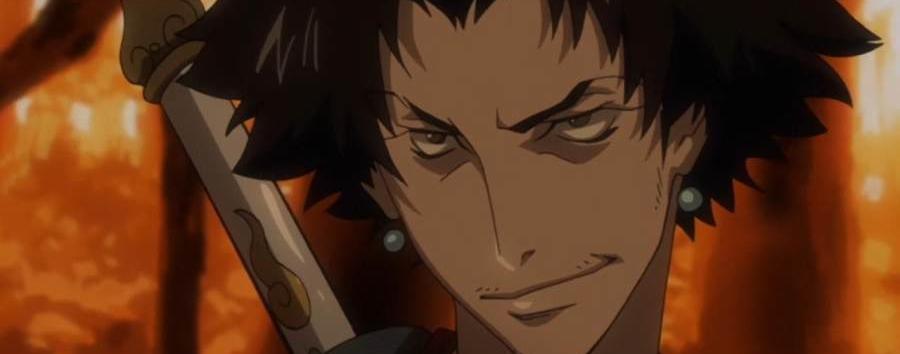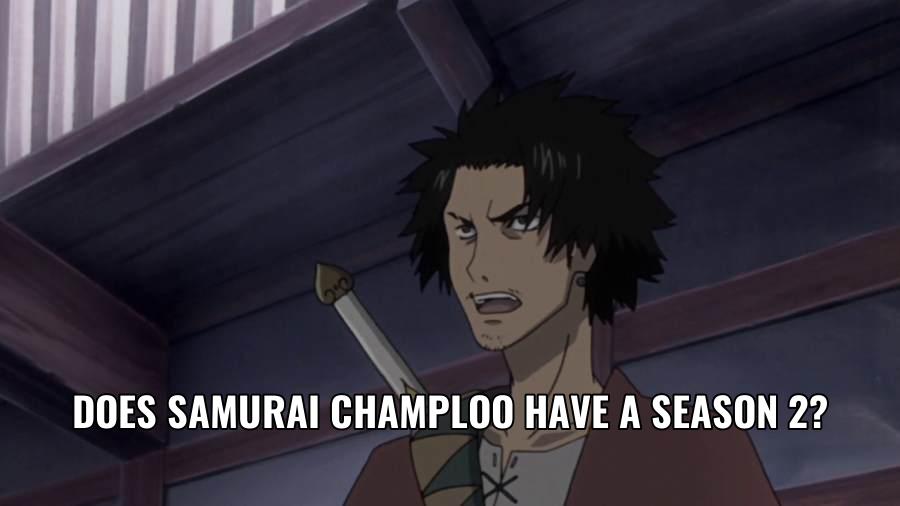The production team for Samurai Champloo was headed by director Shinichir Watanabe, character designer and mechanical designer Mahiro Maeda, and character designer Kazuto Nakazawa.
 | |
| Samurai Champloo (2004) | |
| Title (english) | Samurai Champloo |
| Title (japanese) | サムライチャンプルー |
| Genres | ['Action', 'Adventure', 'Comedy'] |
| Rating | R - 17+ (violence & profanity) |
| Type | TV |
| Source | Original |
| Episodes | 26 |
| Duration | 24 min per ep |
| Status | Finished Airing |
| Airing Date | May 20, 2004 to Mar 19, 2005 |
Does samurai champloo have a season 2 The creator has yet to make any announcement about the next part of the series. There is no release date for the second season of Samurai Champloo.
If you compare the first season of “Samurai Champloo” to “Cowboy Bebop”, you’ll find that the ending is very conclusive. It seems less likely that the second season of ‘Samurai Champloo’ will come out because Watanabe never came out with another season of ‘Cowboy Bebop’.
How Old Is Cowboy Bebop? Cowboy Bebop began airing on TV Tokyo on April 3, 1998 and ran until June 26, 1998. The show’s first run only included episodes 2, 3, 7, 15 and 18 due to its 6PM timeslot and depictions of graphic violence. From October 24 to April 24 1999, Wowow showed the entire series. The full series has aired in Japan as well as on various television networks in Southeast Asia, South Asia and East Asia.
There are a lot of emotions at the end of Samurai Champloo. They have separate roads for Fuu, Jin, and Mugen. It’s a happy ending but also sad. They walk away without a glance, despite everything they faced and their friendship with each other.
The popular chanbara film and television genre is typified by Samurai Champloo. The Edo setting, a focus on samurai or other swordsman Characters, and lots of exciting, dramatic fights are Trademarks. Chanbara was a method of expressing a social critique in early Japanese cinema.
Samurai Champloo is set in Edo Japan and features a ronin named Jin who helps Fuu find a samurai who smells of sunflowers and a wild ruffian named Mugen. The real events from the Edo period of Japan are depicted in the show, which is well-known for its diverse soundtrack and hip-hop elements. The history is valid despite the show not getting everything historically correct, because it is not a documentary but an entertainment show.
Fuu is a fifteen year old Waitress with Kaiken fight style who loves food, travel, meeting new people, and is Abandonment First Appeared Tempestuous Temperaments. She tricks Jin and Mugen into going with her on her journey to find the “Sunflower Samurai”.
Fuu and Mugen embark on a journey together. The time that Jin and Shino spent together was fleeting. Every episode, Mugen and Fuu are together. Shino and Jin only get one.
Cowboy Bebop has a slight edge over Samurai Champloo. The animation of Samurai Champloo is more stylized and distinct than Cowboy Bebop, so it’s a plus, but it’s also a masterpiece of animation.
Table of Contents
Fuu’s father
The actual word champloo is blend and it is best known as a part of the popular series “Samurai Champloo”. “Samurai Champloo” is named because of its mix of traditional japanese culture and hip-hop. It is strange to first time viewers that the final product works.
He is the main plot device in the series and the father of Fuu. He’s voiced in the English Dub by Doug Stone and in the Japanese Dub by Kouji Nakata.
When it came out, Samurai Champloo was a hit, but it has fallen off the radar. This is a shame, since the series is worth a look even if you don’t like fight scenes. The animation is amazing and very fluid, which is not something you would expect.
Cowboy Bebop is named after a form of jazz and Samurai Champloo uses hip hop to accentuate its anachronistic Edo-era setting Japan, while Watanabe is often acting in a music advisory role on shows like Michiko & Hatchin.

Does Fuu like Mugen?
The entire day, Fuu is concerned for Mugen. She makes mention of the exact thing that happened to him every time something bad happens to him. Even when Jin gives up on him, she holds faith that he will come back. She sees a silhouette in the distance and they play romantic music.
Mugen states in the “elegy of the Entrapment” that he did not know who his parents were. It is known that Mugen was sentenced to death for piracy and that he had blue tattoos on his wrists and ankle, but the circumstances of his imprisonment were unknown at the time.
A recap of who the characters are, their stakes in the series, and the ending of the series is needed in order to fully understand how the series ends. After each insults the village’s governor, Mugen, and Jin attempt to fight to the death in the tea shop where Fuu works as a server. Jin Murdered the governor’s bodyguards for attempting to kill a villager, and Mugen broke the fingers of the governor’s son, who later died in a fire during a fight between Jin and Mugen.
Fuu is looking for the samurai who smells of sunflowers and she is accompanied by Mugen and Jin. Jin is a foil to Mugen in his personality and disposition. His fighting style is erratic and reckless.

The rooster is represented by Mugen in the series’ opening credits. In the two-part episode, birds appear multiple times in the story of Mugen.
Mugen is drawn as black by the creators. A brown skinned person with brown hair is named Mugen. Blackness plays a large part in the fighting style of Mugen. Champloo Wikia states that Mugen is something of an antihero due to his rude, lewd, and nihilistic nature. He likes fighting and is prone to pick fights for trivial reasons.
